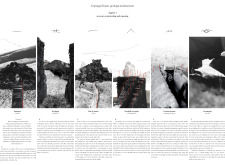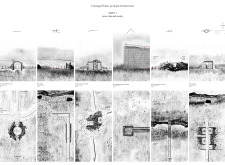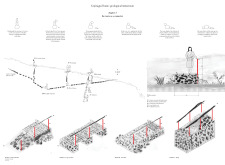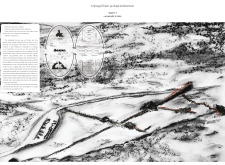5 key facts about this project
The Grjótagjá Route is an architectural project developed within the unique geological landscape of Iceland. This undertaking integrates architectural design with the natural environment, creating a pathway that allows visitors to explore and engage with the area's volcanic activity and tectonic features. As a result, this project emphasizes the relationship between human-made structures and nature, fostering a sense of connection and understanding of the geological processes that shape the land.
The project serves as a tourist route that enhances accessibility to significant geological sites while providing educational experiences. Visitors can traverse pathways that are carefully positioned to maintain the integrity of the landscape, ensuring minimal disruption to existing features. The design considers both functionality and aesthetic integration, creating spaces that are not only navigable but also encourage contemplation of the surrounding environment.
The architectural elements of the Grjótagjá Route include a series of pathways, viewing platforms, and benches constructed from local materials. Local stone is used to blend with the rocky terrain, while wooden structures offer warmth and comfort. Metal components provide structural stability necessary for durability against Iceland’s harsh weather conditions. The design prioritizes sustainability, employing materials that resonate with the natural setting and reinforce the project's ecological commitment.
Unique design approaches are evident throughout the Grjótagjá Route. The integration of natural topography with deliberate human interventions distinguishes this project from conventional architectural endeavors. Rather than imposing on the landscape, the design seeks to harmonize with it, allowing visitors to feel both the power of nature and the subtlety of architectural restraint. Features like the "Pile of Stones" engage visitors, prompting a tactile interaction with the environment. This encourages a reflective journey rather than one solely focused on efficiency or transit.
The educational aspect of the Grjótagjá Route enhances the visitor experience. Informative displays along the pathway illustrate the processes at work in the geological landscape, promoting a greater understanding of the interdependency between nature and architecture. This dual focus on exploration and education is a defining characteristic of the project that allows it to stand apart from similar environments.
The Grjótagjá Route exemplifies a thoughtful interaction between architecture and landscape, designed to engage visitors in a meaningful way. Explore the project presentation for more details, including architectural plans, architectural sections, architectural designs, and architectural ideas that provide deeper insights into the project's innovative approaches and its context within the Icelandic landscape.






















































